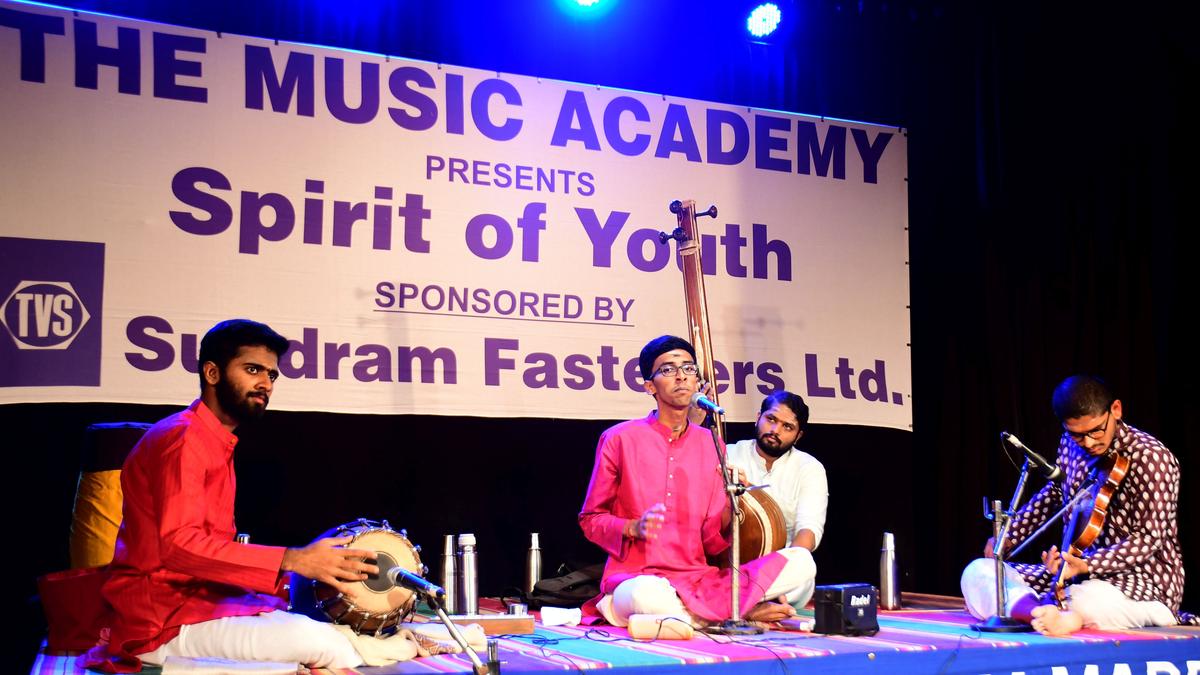
Dhanush Anantharaman with Naga Sai (violin) and R.S. Pranav (mridangam)
| Photo Credit: K. Pichumani
For aspiring young musicians, every concert opportunity is an acid test. When competitive spirit is the ruling theme of an event that is held under the auspices of The Music Academy, the challenge looms larger. At the end of the 34th Spirit of Youth series, dedicated to the memory of Ambujam Krishna, and held recently at the Kasturi Srinivasan Hall, all the 10 main artistes and their accompanists would have emerged wiser after the experience, irrespective of whether they landed the prize or not.
In a pleasant irony, the charm of the old school music came as a whiff of fresh air in Dhanush Anantharaman’s vocal recital, which began with Tyagaraja’s ‘Tulasee dalamulache’ in Mayamalavagowla. The elaborate niraval and kalpanaswaras at the customary ‘Saraseeruha punnaaga’ were a precursor to what was in store.
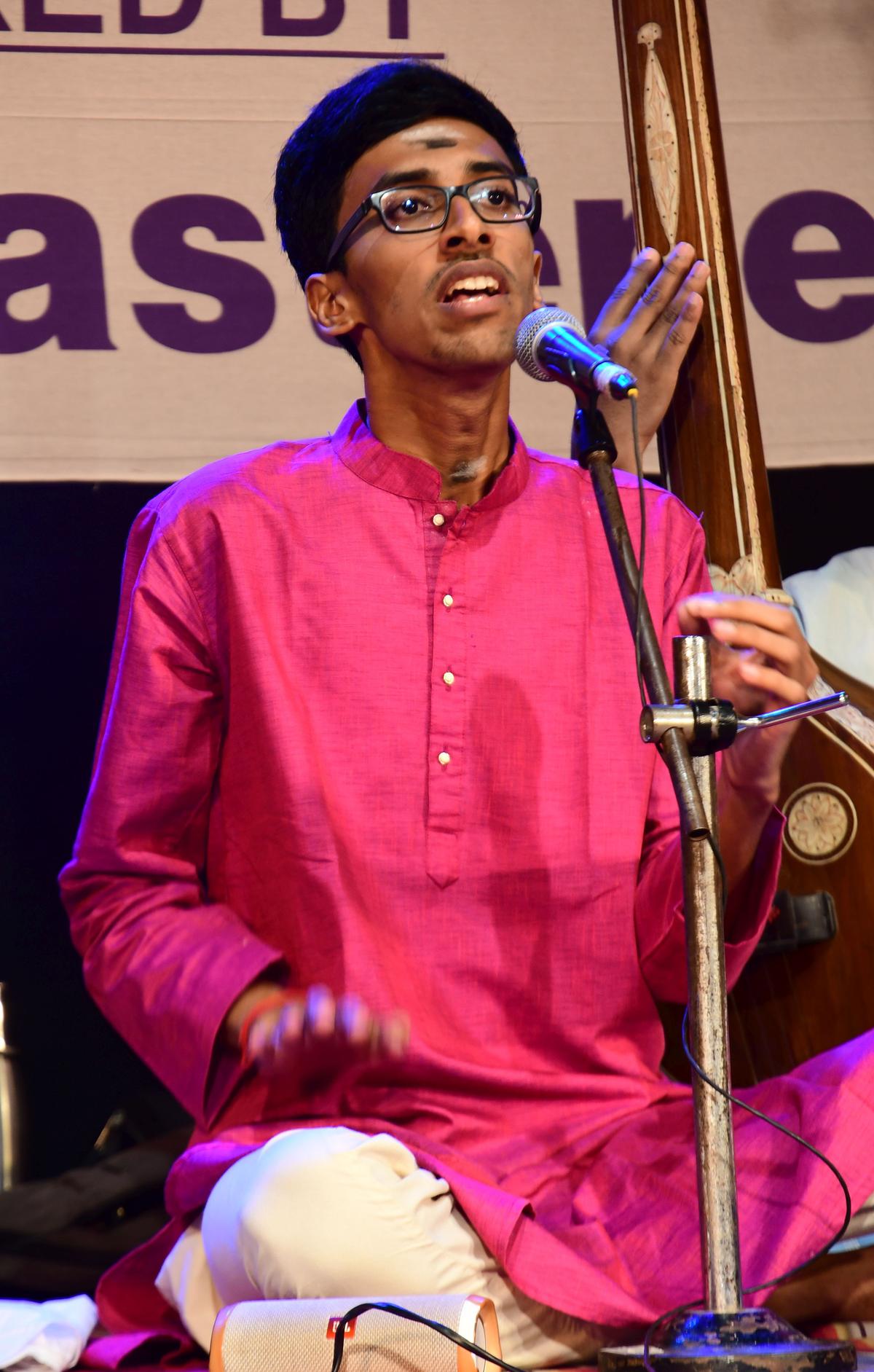
Dhanush Anantharaman managed to eschew repetition of the characteristic vakra phrases in his Kannada alapana.
| Photo Credit:
K. Pichumani
Dhanush aced the Kannada alapana with finesse, largely managing to eschew repetition of the characteristic vakra phrases even while keeping the raga identity intact. Muthuswami Dikshitar’s ‘Sri Mathrubhutam’ followed with brisk swara sequences at ‘Vaasita nava javanti pushpa’.
The young vocalist sped through ‘Varanarada’ in Vijayasri before plunging into the magnificence of Bhairavi, presenting an akara and gamaka-filled delineation of the raga in detail ahead of a soulful rendition of Syama Sastri’s ‘Sari evaramma’. Niraval and swaras at ‘Syamakrishna paripalini’ in two speeds in an ideal kalapramanam were the highlight of the concert. The adoption of the phrase from the mudra line of the same composer’s swarajathi in the keezh kaalam lent a delightful touch.
After ‘Jagathinai kaathidum Janardhana’ by Ambujam Krishna, the concert concluded with a Thiruppugazh tuned in Senchurutti and Nadanamakriya.
Naga Sai displayed a good measure of sensitivity on the violin, while Pranav provided enthusiastic percussion support and his thani in Khanda Jhampa was absorbing.
Neat raga essays
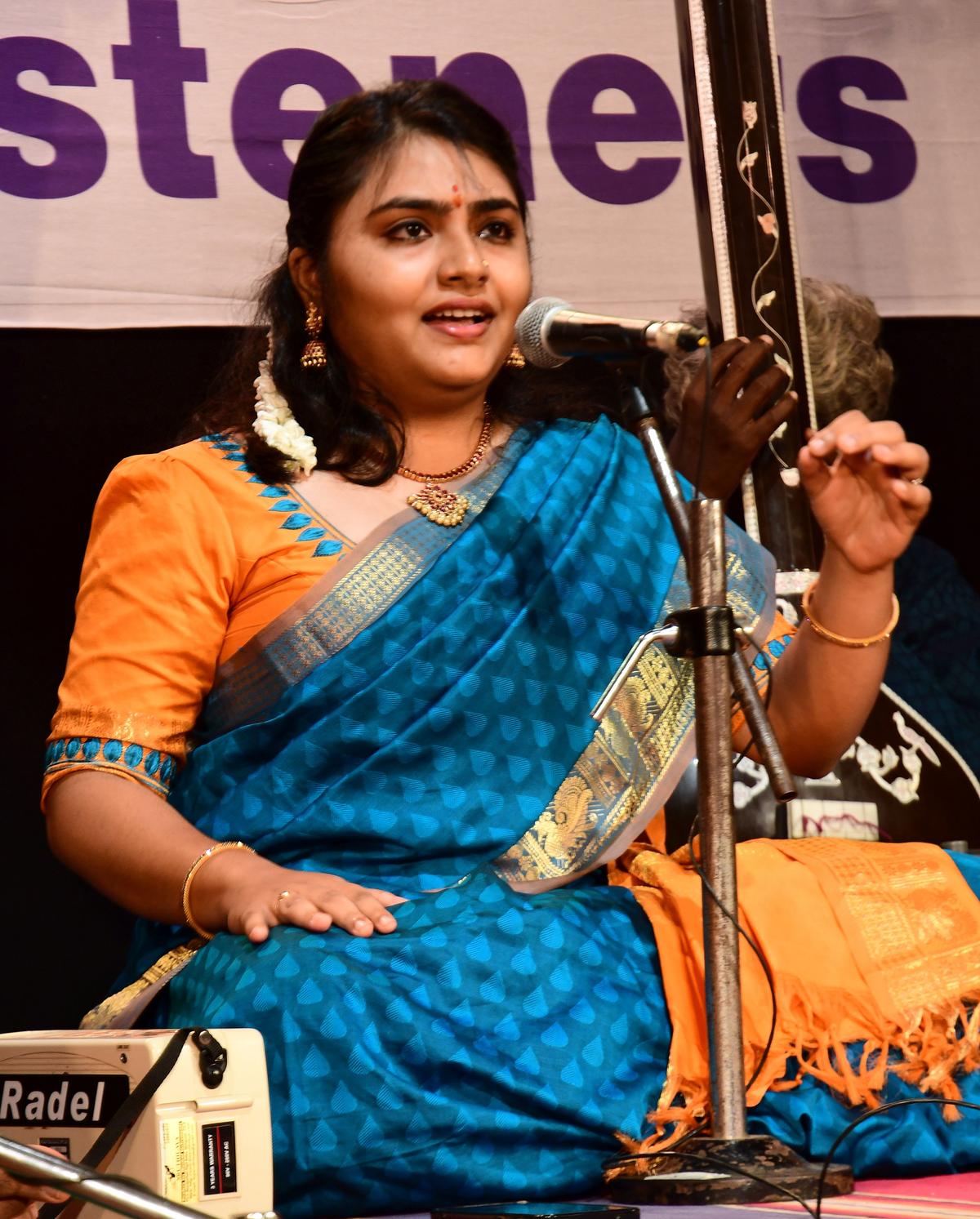
Supriya Raja handled well the Thodi and Kalyani raga essays.
| Photo Credit:
K. Pichumani
A sparkling swara avartanam at the pallavi opening of ‘Palimparavadelara’, a Pallavi Seshayyar composition in Arabhi, set the tone for Supriya Raja’s concert in which she was accompanied by M. Meenakshy Dev and B.N. Kasinadh on the violin and mridangam respectively.
Supriya chose for exploration two ragas — Thodi and Kalyani — that are at the opposite ends of the swara spectrum, handling both with elan. After a tidy raga essay of Kalyani, Supriya flowed seamlessly into Patnam Subramania Iyer’s ‘Nijadasa varada’, where the anupallavi line ‘Bhujagadhipa sayana’ was taken up for an expressive niraval.
Then she breezed through Dikshitar’s ‘Ramachandram bhavayami’ before delving into Thodi, the evening’s main raga, which was built up with structural coherence. Supriya’s interpretation of Tyagaraja’s ‘Emi jesithe’ was marked by deep bhava, followed by a skilful niraval and engaging swaras at ‘Varamantramanyulaku’ in the charanam.
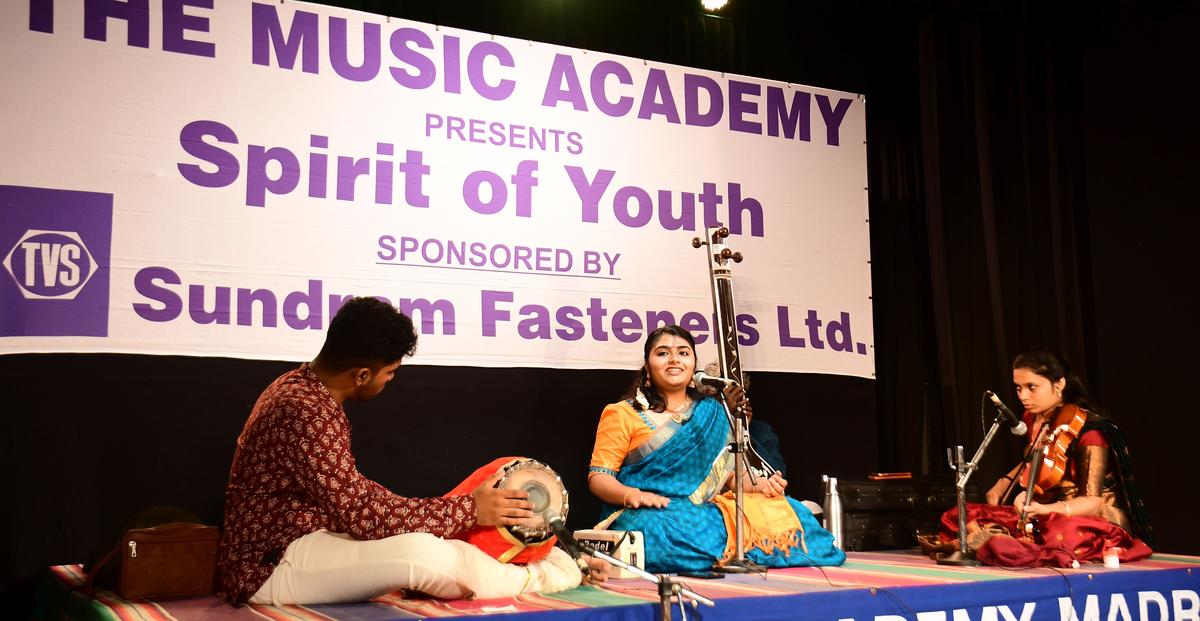
Supriya Raja accompanied by M. Meenakshy Dev (violin) and B.N. Kasinadh (mridangam).
| Photo Credit:
K. Pichumani
‘Ododi vanden Kanna’ in Dharmavathi was Supriya’s choice for the mandatory composition by Ambujam Krishna. With Kalyani and Dharmavathi having the same uttaranga — in fact, a solitary note (ga) differentiates the two — a song in some other raga would have fitted the bill better. The lively recital came to a close with Papanasam Sivan’s Behag thillana.
Violinist Meenakshy elevated the concert with sublime artistry. While her Kalyani and Thodi were insightful and resonant, she worked in perfect tandem with Supriya during the niraval and swara exchanges. Kasinadh too played a good hand throughout, notwithstanding a minor hiccup in his Misra Chapu thani.
Bhava-rich rendition
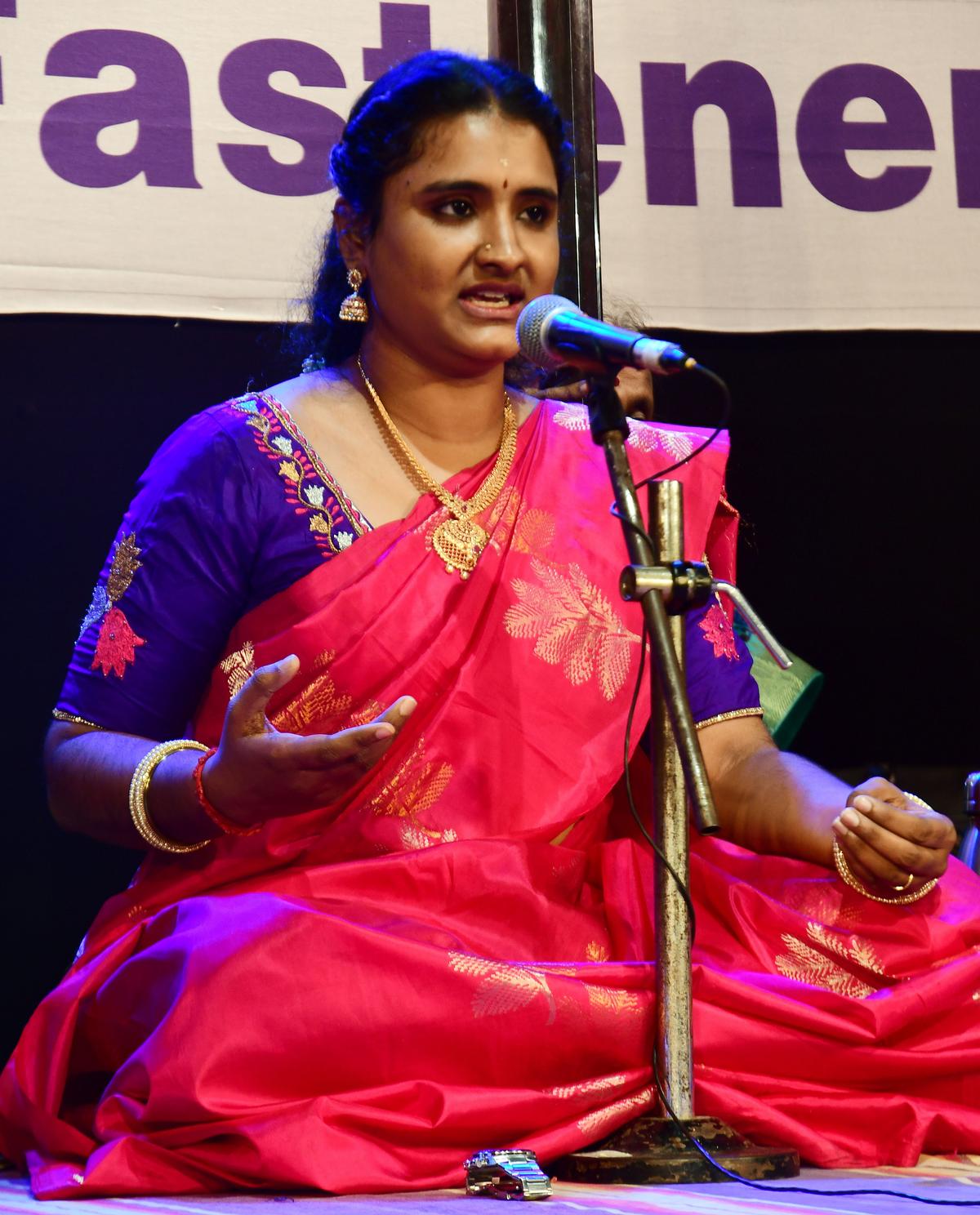
Atchayaharini’s niraval and swaraprastaras for Pantuvarali and Bhairavi were impressive.
| Photo Credit:
K. Pichumani
B. Atchayaharini’s vocal performance was noteworthy for her sound understanding of the musical values, bhava-rich rendition and deft voice modulation. After warming up with Pallavi Gopala Iyer’s varnam in Surati, she stepped on the pedal by firing away swara salvos at ‘Saraswathi’ in Puliyur Duraiswami Iyer’s ‘Sarasiruhasanapriye’.
‘Sambho Mahadeva’ by Tyagaraja in Pantuvarali and an engrossing Bhairavi followed by the Dikshitar masterpiece ‘Balagopala’, with the latter being the main number, formed the nucleus of the concert. Atchayaharini did a commendable job in both, with niraval and swara prastharam at ‘Sambho Mahadeva’ and ‘Neela neeradha sareera’. However, lingering a little more in the lower octave will make her raga alapanas more rounded.
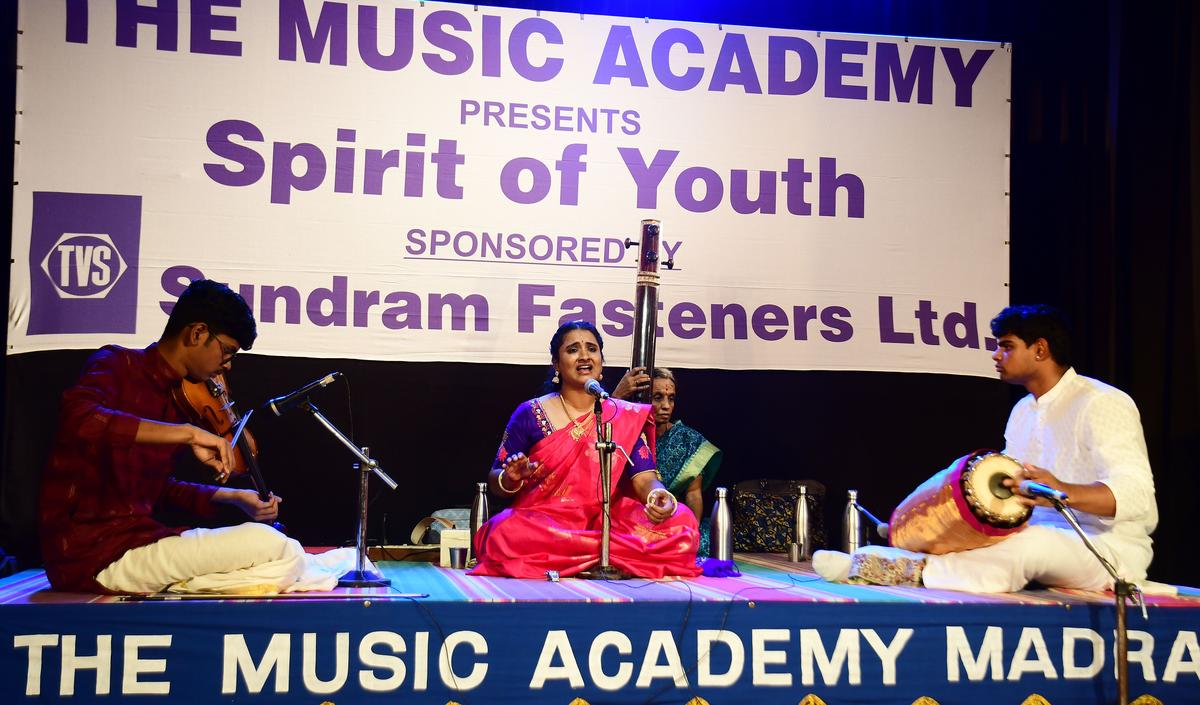
Atchayaharini accompanied by Adithya Anil (violin) and Arvind Raman (mridangam).
| Photo Credit:
K. Pichumani
Adithya Anil on the violin and Arvind Raman on the mridangam embellished the recital with their valuable support. Adhithya’s raga essays were tuneful, and he was equal to the task with his responses in the niraval and swara sections too. Arvind came up with a robust thani in two-kalai Adi talam.
In between, ‘Kanna vaa Manivanna vaa’, a pancha ragamalika song by Ambujam Krishna — featuring Kapi, Sama, Vasantha, Neelambari and Surati — added a vibrant splash of colour. Poochi Srinivasa Iyengar’s thillana in Poornachandrika brought Atchayaharini’s concert as well as the series to a spirited close.
